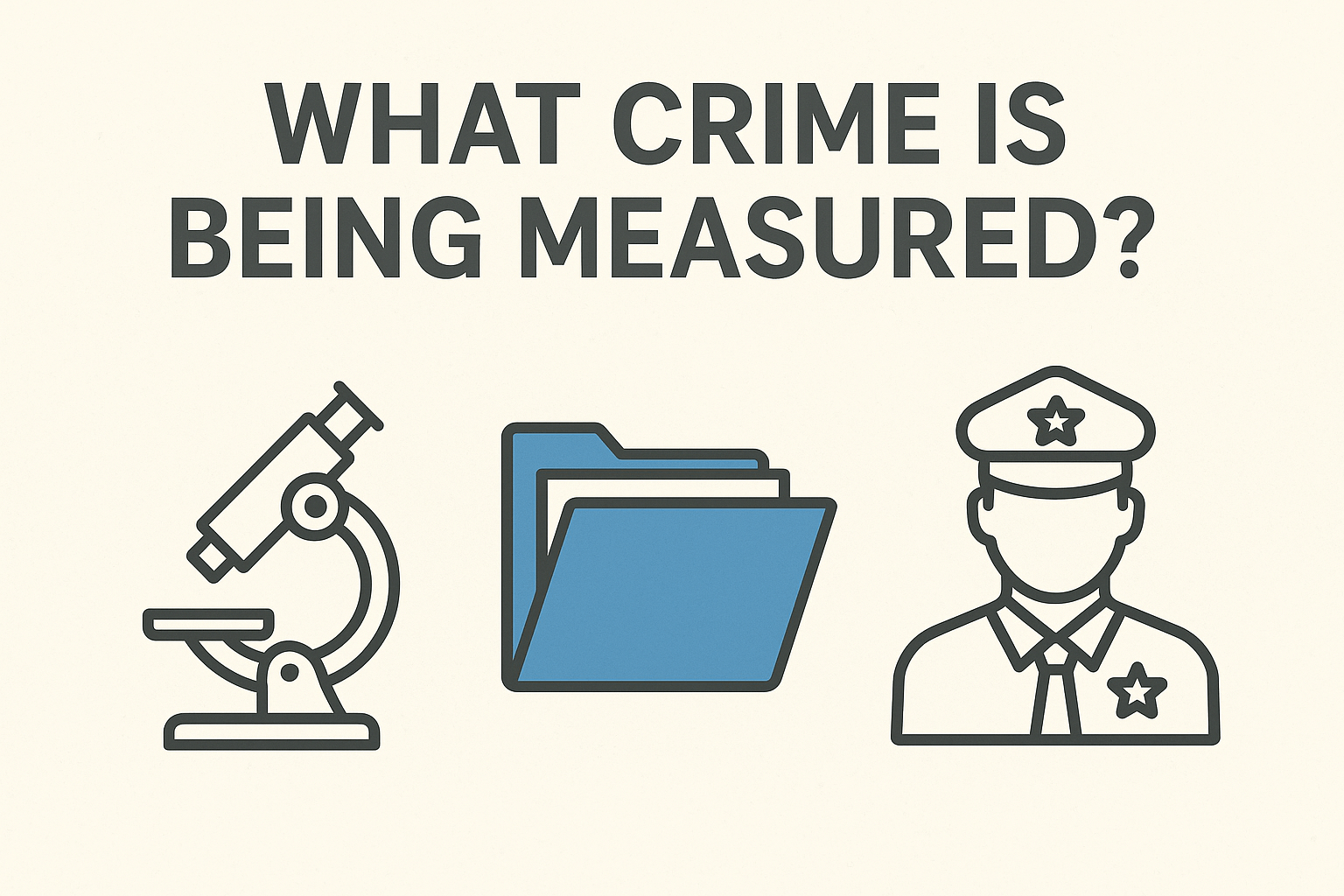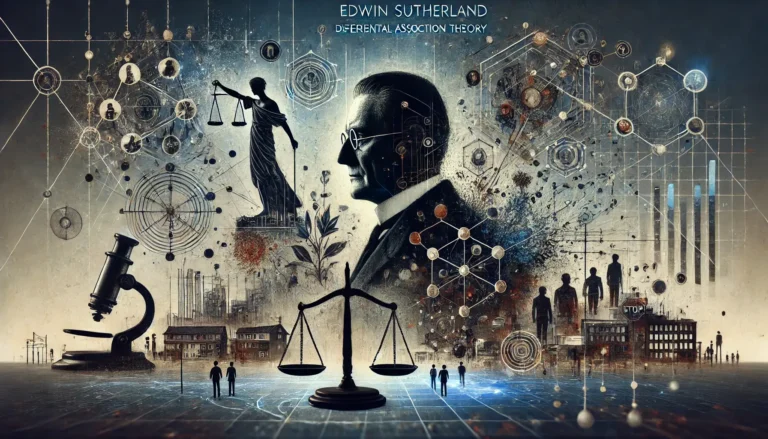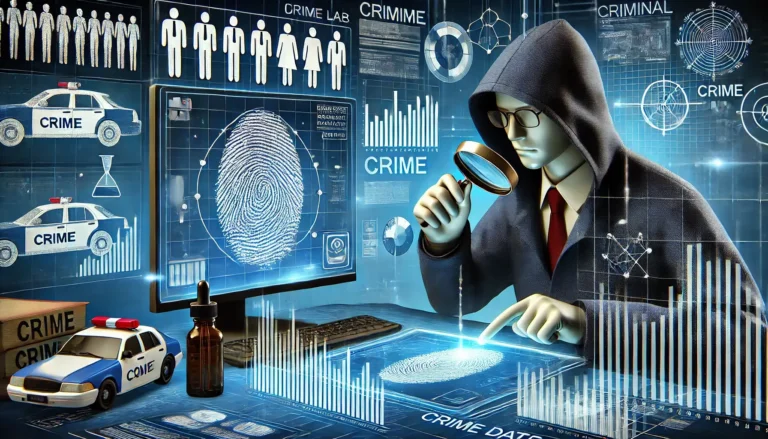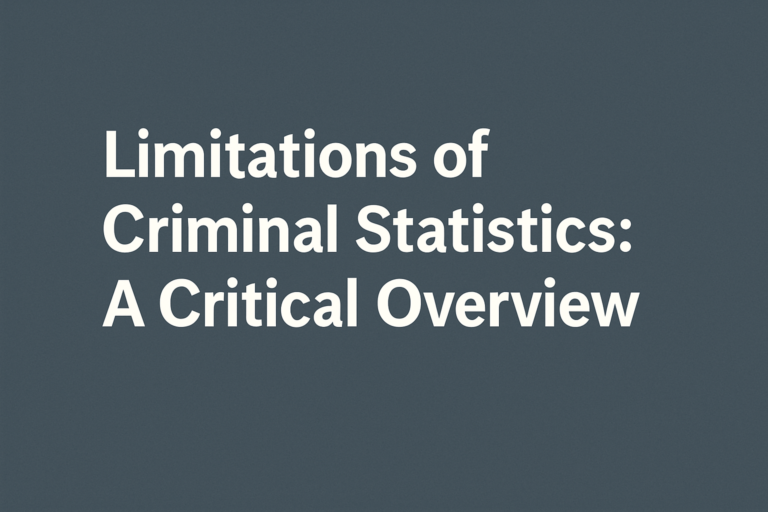Crime Statistics | What Crime Is Being Measured?
Introduction
Crime statistics are essential tools for governments, law enforcement agencies, policymakers, and researchers seeking to understand and respond to criminal behavior. These statistics guide decisions on resource allocation, crime prevention strategies, and criminal justice policies. However, the nature of crime and how it is measured can lead to misleading interpretations if not understood in context. In this article, we explore what crime is actually being measured, the sources and limitations of crime data, and the broader implications of relying on these statistics.
The Nature of Crime and Its Complexity
Crime is a social construct that varies across cultures, legal systems, and time periods. What is considered a criminal offense in one country may be completely legal in another. This variability complicates the process of measuring crime in a consistent and meaningful way. Furthermore, crime encompasses a wide array of behaviors—from violent acts like murder and assault to non-violent offenses such as fraud, cybercrime, and white-collar crime.
The complexity of crime means that not all acts are easily quantifiable. Many crimes go unreported or undetected, while others are misclassified by authorities. This raises important questions about the accuracy and completeness of crime statistics. Understanding what is being measured requires a deeper look into the mechanisms of data collection and interpretation.
Sources of Crime Statistics
There are two primary sources of crime statistics:
Official Crime Data
Official data typically include reported crimes, arrests, charges, and convictions. These figures are aggregated and published by governmental bodies such as the FBI in the United States or national statistical offices in other countries.
Victimization Surveys
Victimization surveys, such as the National Crime Victimization Survey (NCVS) in the U.S., provide an alternative measure by asking individuals about their experiences with crime, regardless of whether those crimes were reported to the police. These surveys help fill in the gaps left by official statistics, offering a more comprehensive picture of crime trends and patterns.
The Issue of Underreporting
One of the most significant challenges in crime measurement is underreporting. Many crimes, particularly those involving domestic violence, sexual assault, or financial fraud, are not reported to the authorities. Victims may fear retaliation, distrust law enforcement, or believe that reporting will not lead to meaningful action.
Underreporting skews crime statistics, making certain types of crime appear less prevalent than they actually are. This can have serious consequences for policy decisions and public perception. It also highlights the importance of considering multiple sources of data when evaluating crime trends.
The Role of the Criminal Justice System
The criminal justice system plays a central role in determining what crime is measured and how. From initial reporting to investigation, prosecution, and sentencing, each stage of the system involves decisions that affect the recording and classification of crime. These processes are subject to human judgment, institutional priorities, and available resources.
For example, police departments may prioritize certain types of crime based on political or community pressures, which can influence arrest rates and crime categorization. Similarly, prosecutors may choose to pursue specific charges or plea bargains that alter how offenses are recorded. These factors contribute to discrepancies between the actual incidence of crime and what is reflected in official statistics.
Types of Crime Most Commonly Measured
Certain categories of crime are more likely to be captured in official statistics. These include:
Violent and Property Crimes
Violent crimes (homicide, assault, robbery), property crimes (burglary, theft, arson), and drug offenses are more visible, more likely to be reported, and often subject to proactive enforcement by police.
Underrepresented Crimes
In contrast, crimes like white-collar offenses, environmental crimes, and cybercrime are often underrepresented in crime data. These offenses may be more complex to investigate, involve powerful actors, or occur across jurisdictions, making them harder to measure and report accurately.
Crime Rate Analysis and Its Implications
Crime rate analysis involves examining the number of reported crimes relative to the population size, usually expressed per 100,000 people. While this provides a standardized metric for comparison across regions and time periods, it also has limitations.
For instance, an area with a high crime rate may simply have better crime reporting and enforcement mechanisms rather than a greater incidence of crime. Similarly, population changes, policing strategies, and data recording practices can influence crime rate trends. Analysts must consider these contextual factors to avoid drawing erroneous conclusions.
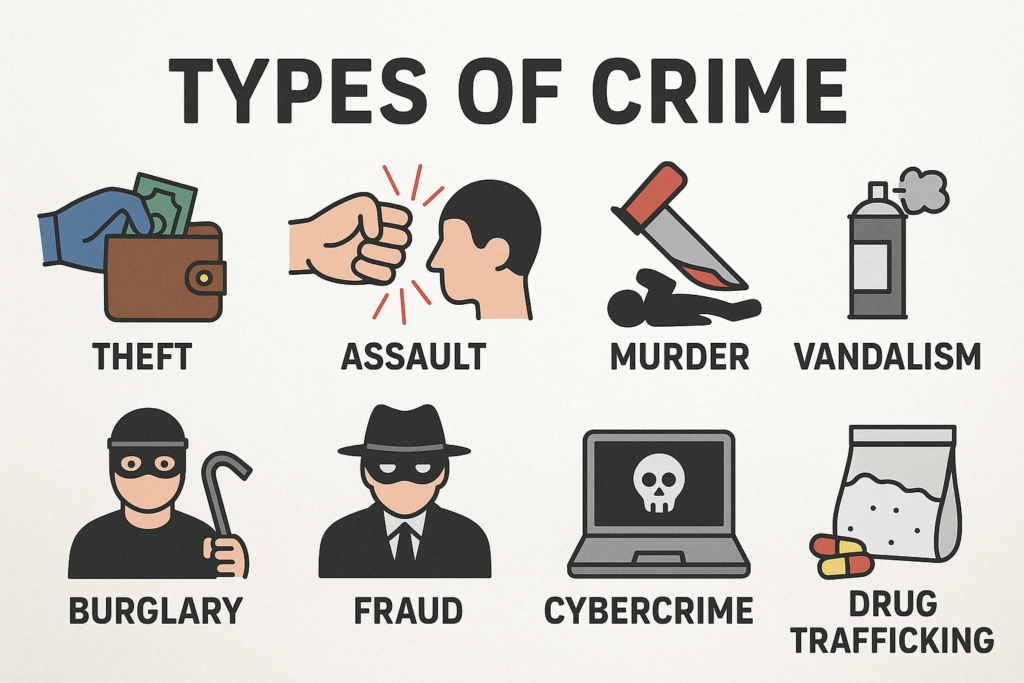
The Role of Technology in Measuring Crime
Advancements in technology have transformed the way crime is measured and understood. Data analytics, geographic information systems (GIS), and predictive policing tools allow for more precise tracking and analysis of criminal activity. These technologies can help identify crime hotspots, allocate resources efficiently, and detect patterns in criminal behavior.
However, technological tools are only as good as the data they rely on. If the underlying crime statistics are flawed or incomplete, the conclusions drawn from these tools may be misleading. Moreover, concerns about privacy, bias, and accountability must be addressed when implementing tech-driven crime measurement solutions.
Unreported Crime and the Dark Figure of Crime
The term “dark figure of crime” refers to the amount of crime that goes unreported and, therefore, unmeasured. This hidden portion of criminal activity can be substantial, particularly for crimes involving marginalized communities or sensitive issues.
Understanding the dark figure of crime is crucial for a holistic view of criminal behavior and victimization. Researchers use indirect methods, such as victimization surveys and qualitative studies, to estimate the extent of unreported crime and its impact on society.
International Comparisons of Crime Statistics
Comparing crime statistics across countries is challenging due to differences in legal definitions, law enforcement practices, and data collection methods. What qualifies as a violent crime in one nation may not be classified the same way elsewhere. Moreover, cultural attitudes toward reporting and justice can significantly influence crime figures.
Despite these challenges, international organizations like the United Nations Office on Drugs and Crime (UNODC) attempt to standardize crime data and facilitate global comparisons. These efforts are essential for understanding transnational crime trends and informing international policy.
Interpreting Crime Trends with Caution
Interpreting changes in crime statistics requires careful analysis. A sudden rise in reported crime does not necessarily indicate an increase in actual crime; it could reflect improved reporting mechanisms or shifts in law enforcement focus. Similarly, a decline in crime rates might result from reclassification of offenses or changes in public behavior.
Policymakers and the public must approach crime statistics with a critical eye, recognizing the multiple factors that influence what is measured and how. Overreliance on simplified data can lead to misguided policies and missed opportunities for effective intervention.
Public Perception vs. Statistical Reality
Public perception of crime often diverges significantly from statistical reality. Media coverage, political rhetoric, and personal anecdotes can create a distorted view of how much crime is actually occurring. For example, high-profile cases or sensational reporting can lead the public to believe crime is rising—even when statistics show a decline.
This discrepancy can influence voting behavior, policy support, and community relations with law enforcement. Bridging the gap between perception and data requires transparent communication and public education about how crime statistics are collected and what they truly indicate.

Socioeconomic Factors Influencing Crime Data
Socioeconomic conditions—such as poverty, education levels, and employment opportunities—have a profound impact on crime rates and reporting patterns. Communities with limited access to resources may experience higher levels of certain types of crime, or be less likely to report offenses due to lack of trust in authorities or fear of reprisal.
Understanding the social context behind the numbers is essential. Crime statistics alone do not capture the root causes of criminal behavior, and without this context, policy responses may treat symptoms rather than underlying issues.
The Relationship Between Crime Statistics and Criminology
Crime statistics are not just administrative figures—they are foundational to the field of criminology. Criminologists use crime data to test theories, evaluate criminal justice interventions, and analyze the social, psychological, and economic drivers of crime.
However, the limitations of crime data—such as underreporting, definitional inconsistencies, and systemic bias—pose challenges for academic research. Criminologists must apply critical thinking and methodological rigor when interpreting statistics to ensure that conclusions are both accurate and ethically sound.
Furthermore, criminology can help improve crime statistics by advocating for better data collection practices, inclusive definitions of crime, and more transparent reporting systems. This symbiotic relationship enhances both academic inquiry and practical policy-making.
Conclusion
Crime statistics are vital for understanding and addressing criminal behavior, but they are far from perfect. The question of what crime is being measured reveals the complexities and limitations inherent in crime data. By acknowledging issues like underreporting, classification inconsistencies, and systemic biases, stakeholders can make more informed decisions and promote a more accurate picture of crime in society. Ultimately, a nuanced approach to measuring crime—grounded in multiple data sources and contextual awareness—is essential for building safer, more just communities.

